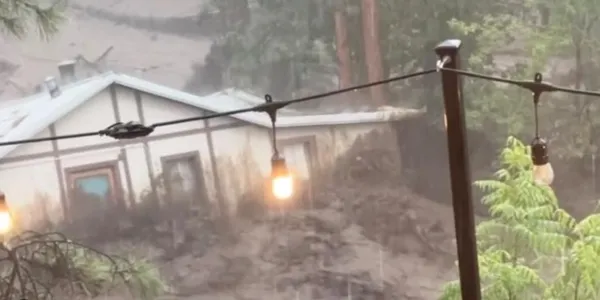Yet Another Historic Rainfall Leads to Deadly Flooding, this time in New Mexico
By: D.D. Reese
Published July 6, 2025
Record-breaking rainfall over the past week has led to widespread, deadly flooding across New Mexico, resulting in at least 17 confirmed fatalities, dozens of injuries, and extensive damage to homes, infrastructure, and public utilities. Officials say the rainfall totals, especially in central and southern parts of the state, are the highest recorded in over a century.
Meteorologists from the National Weather Service (NWS) reported that several counties received more than 10 inches of rain within a 72-hour period, overwhelming riverbanks, dams, and drainage systems. The rainfall was driven by a slow-moving low-pressure system combined with subtropical moisture streaming in from the Gulf of Mexico, producing conditions similar to monsoonal storms but with longer duration and greater intensity.
Widespread Flooding and Impacted Communities
Floodwaters affected urban and rural communities alike, including Albuquerque, Las Cruces, Roswell, Carlsbad, and numerous smaller towns. The flooding forced thousands of residents from their homes, with many neighborhoods becoming inaccessible due to submerged roads and washed-out bridges.
In Lincoln and Otero counties, emergency crews responded to dozens of high-water rescues. In Roswell, sections of the city were submerged under three feet of water, prompting evacuations from senior living facilities and mobile home parks.
The Pecos, Rio Grande, and Canadian rivers all reached or exceeded flood stage in multiple locations. In some cases, levees and drainage channels originally designed for 100-year floods were breached, prompting renewed calls from engineers and planners for infrastructure upgrades.
Emergency Response and Resource Mobilization
Governor Michelle Lujan Grisham declared a state of emergency in 12 counties on July 7, activating the New Mexico National Guard and mobilizing resources from across the state. Search-and-rescue operations have been ongoing in rural areas cut off by floodwaters, and additional support has been requested from neighboring states and the Federal Emergency Management Agency (FEMA).
By Friday, more than 4,000 people had been temporarily displaced. Shelters were opened in schools, churches, and community centers in affected counties. Nonprofit organizations, including the American Red Cross and local relief agencies, are assisting with food, shelter, and supplies for residents in need.
New Mexico Department of Transportation crews are assessing damage to roads and highways. I-25 and U.S. Route 285, two major transportation corridors, experienced closures due to pavement collapse and standing water.
Infrastructure and Environmental Concerns
In addition to property damage and immediate safety risks, the flooding has raised concerns about long-term environmental and public health impacts. Officials from the New Mexico Environment Department are monitoring water quality in rivers, wells, and municipal systems for signs of contamination from sewage overflows, chemical runoff, and debris.
Experts warn that the floods may have long-term effects on soil stability, agriculture, and local ecosystems, especially in areas previously impacted by wildfires, where vegetation loss increases the risk of erosion and mudslides.
Historical Context and Climate Considerations
Climatologists say that while New Mexico is no stranger to summer monsoon rains, the intensity and persistence of this rainfall event are exceptional. Preliminary data suggests that some regions received more than 400% of their normal monthly precipitation in less than a week.
Dr. Teresa Lujan, a climate researcher at the University of New Mexico, noted that warmer atmospheric conditions can increase moisture retention in the air, potentially contributing to heavier downpours. “While it’s too early to directly link this event to climate change, these kinds of extreme precipitation events are consistent with what climate models have projected for the Southwest,” she said.
Looking Ahead
As cleanup begins, officials are focusing on restoring essential services, assessing damage to public infrastructure, and ensuring that affected residents receive the support they need. FEMA representatives arrived in the state on July 10 and are working with local officials to conduct damage assessments and begin the process for federal disaster relief.
The New Mexico Emergency Management Department has launched a disaster assistance website and hotline to connect residents with shelter, food, and recovery services. Public health officials are also encouraging residents returning to flooded homes to exercise caution and report mold, structural issues, or contaminated water sources.
“This disaster has touched nearly every corner of our state,” said Lt. Gov. Howie Morales during a press briefing. “But New Mexicans are resilient. With coordination, compassion, and the right resources, we’ll rebuild stronger than before.”
